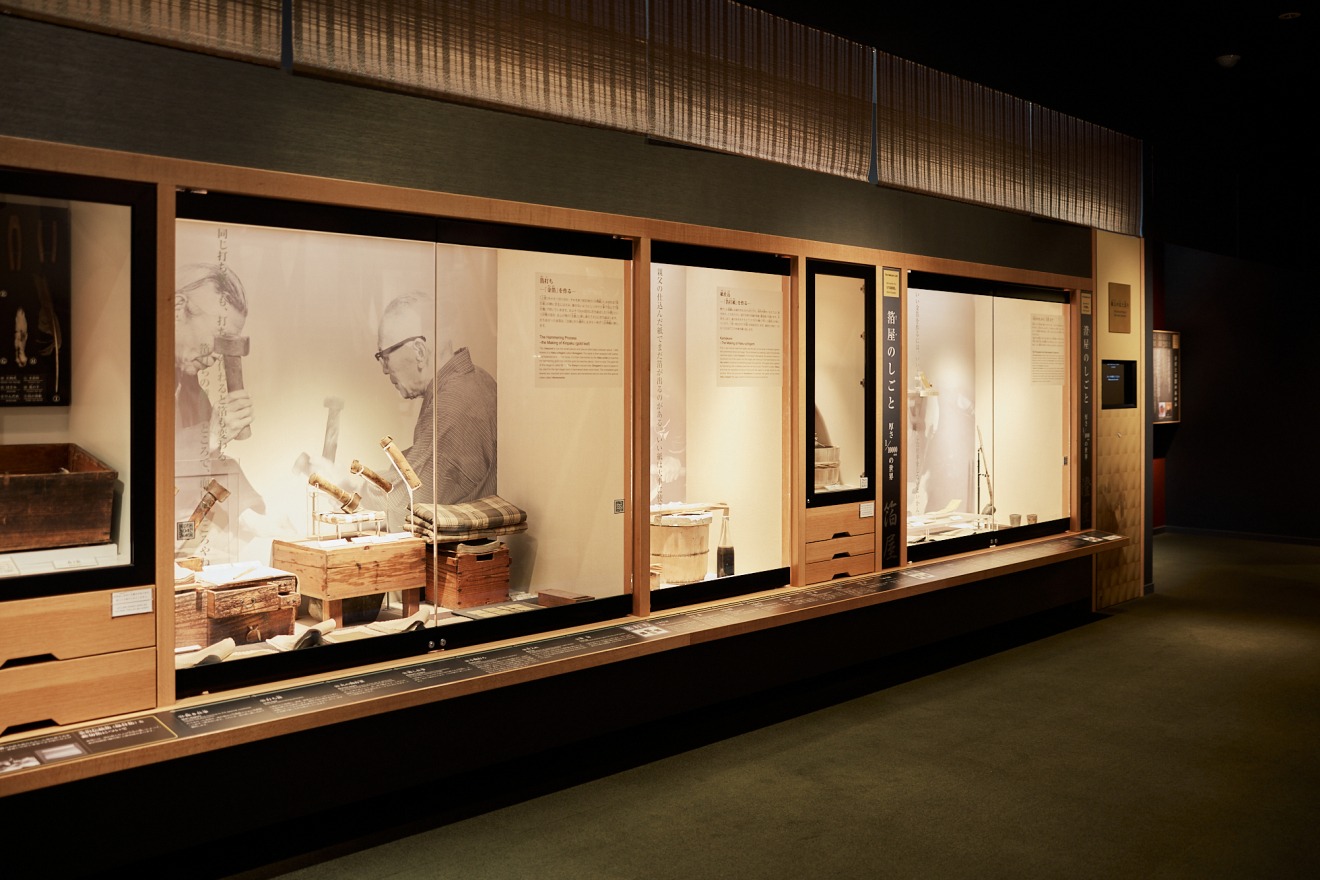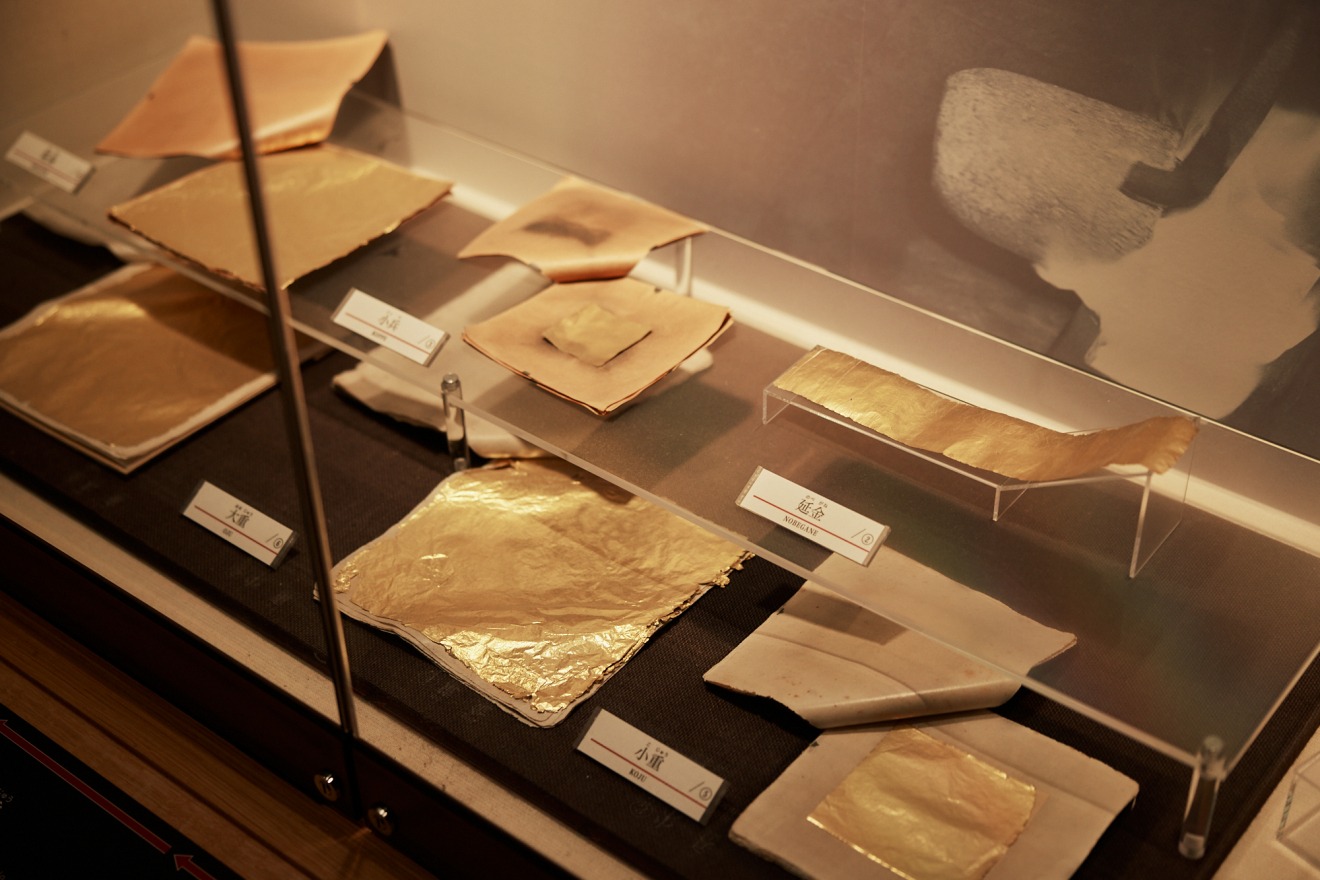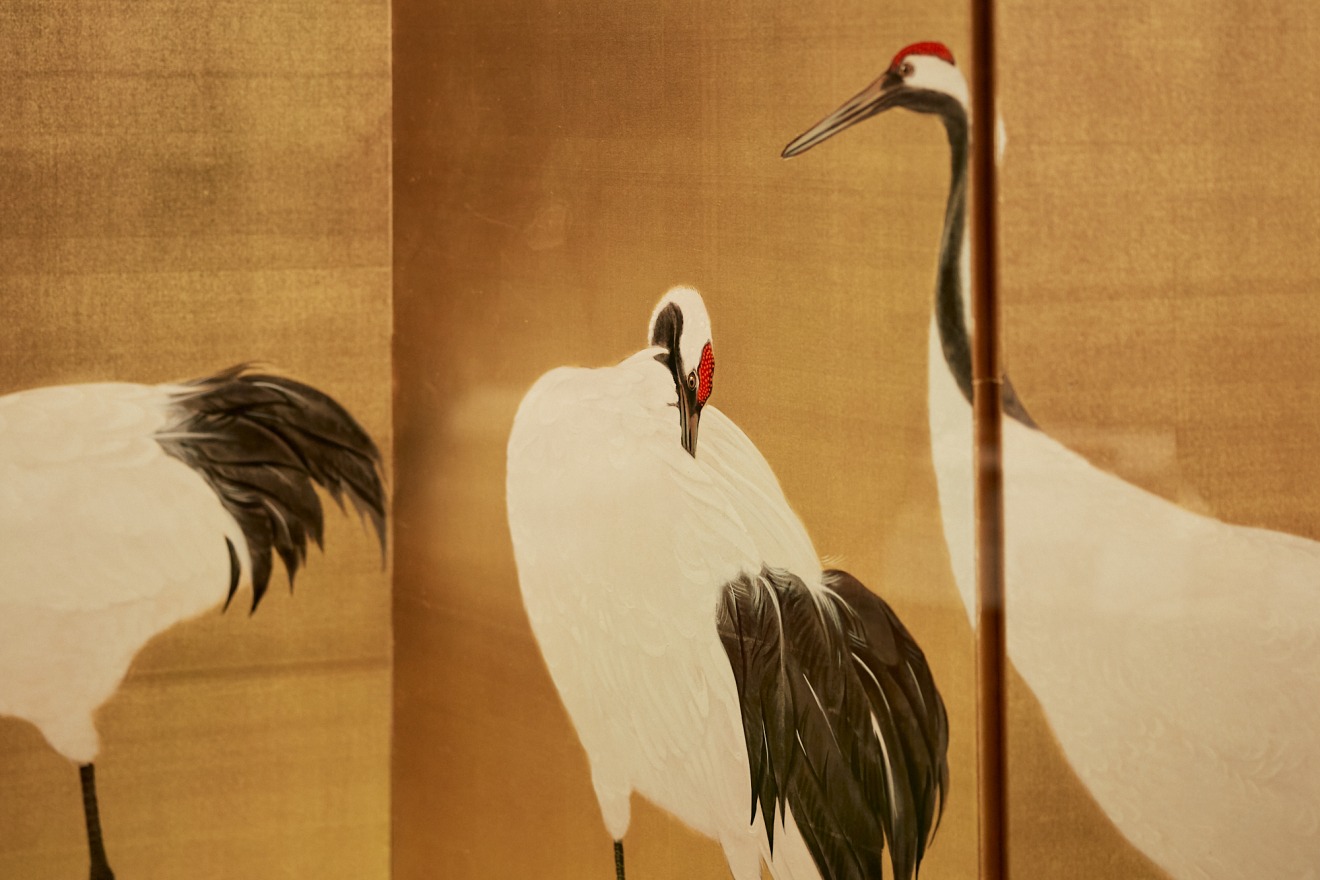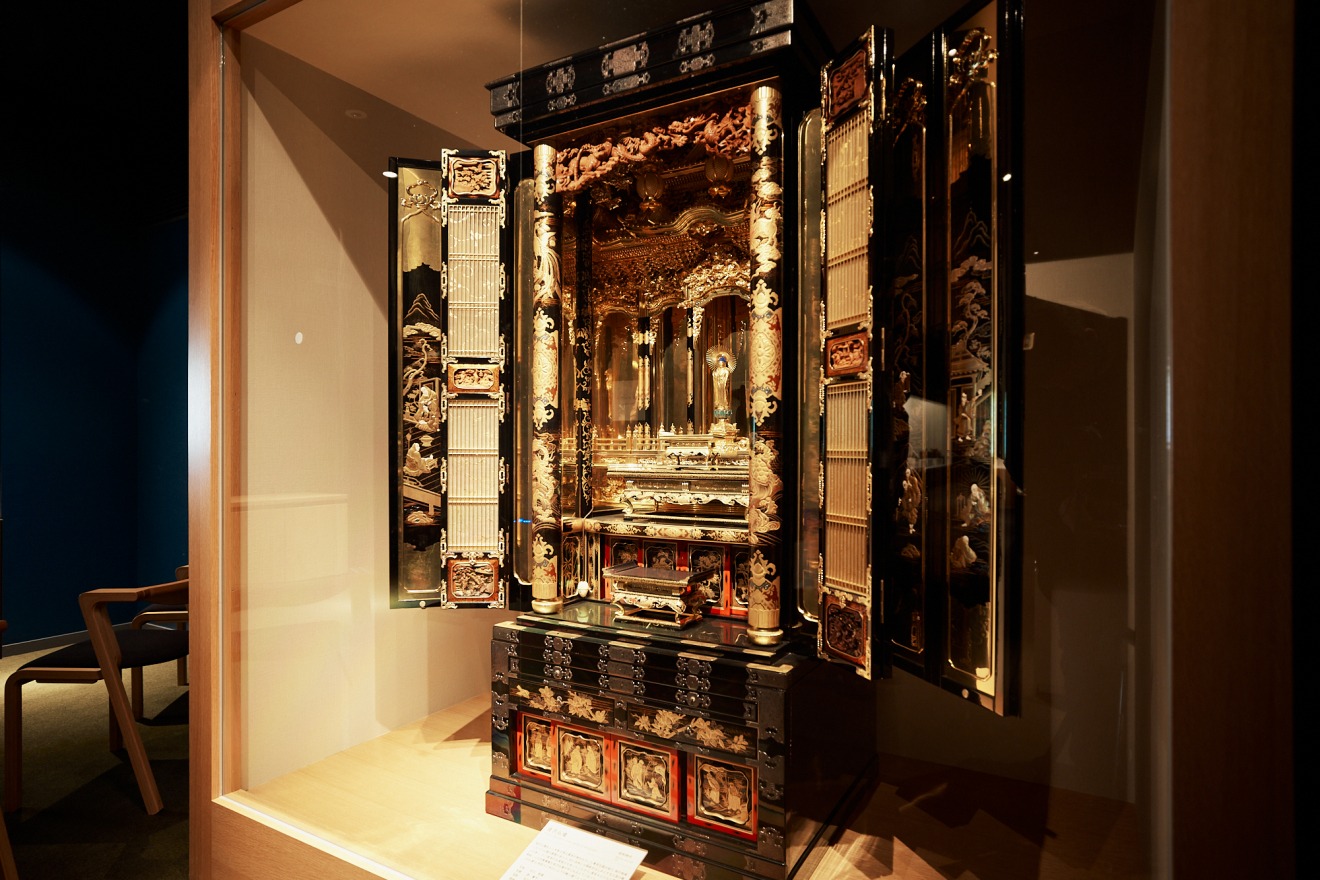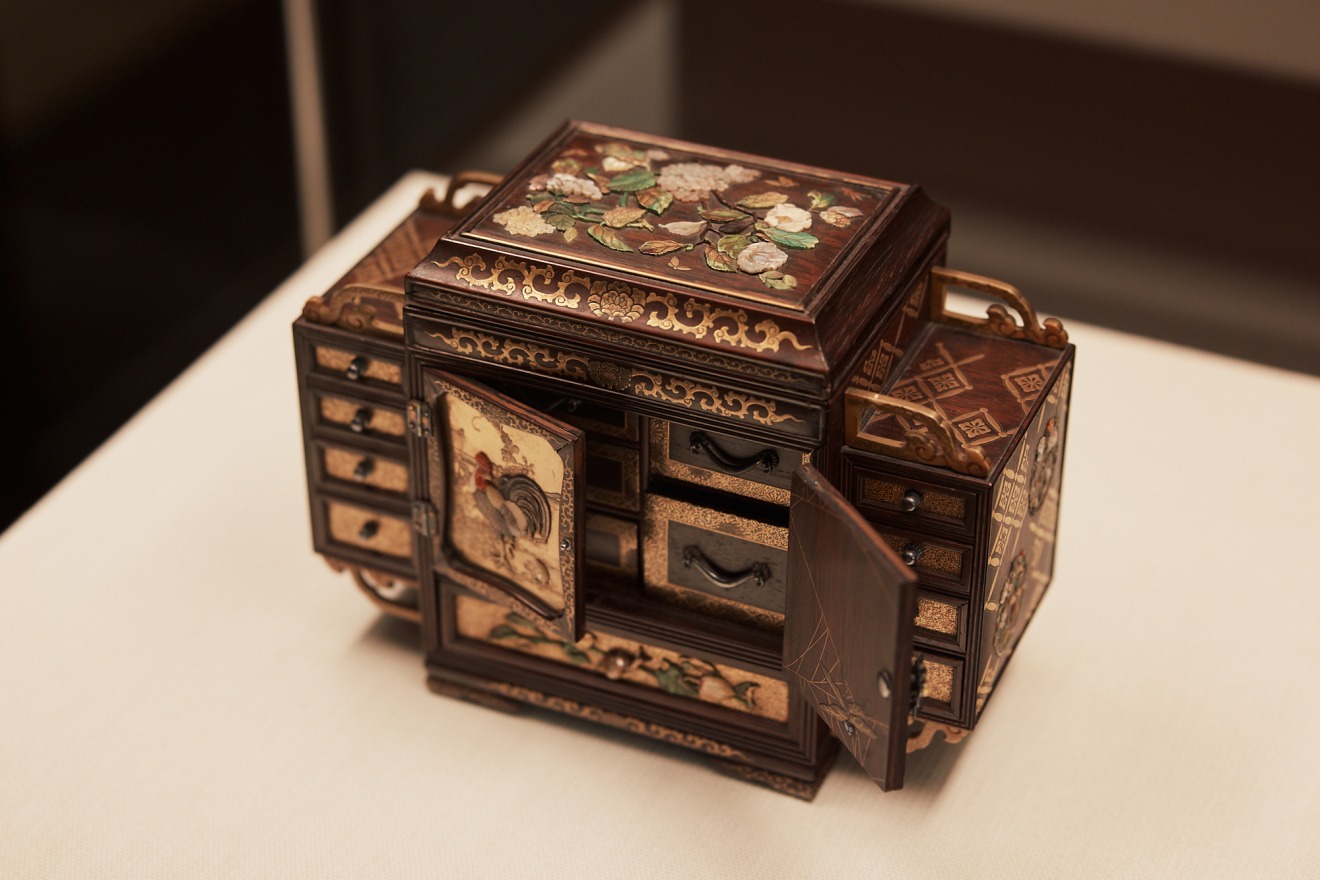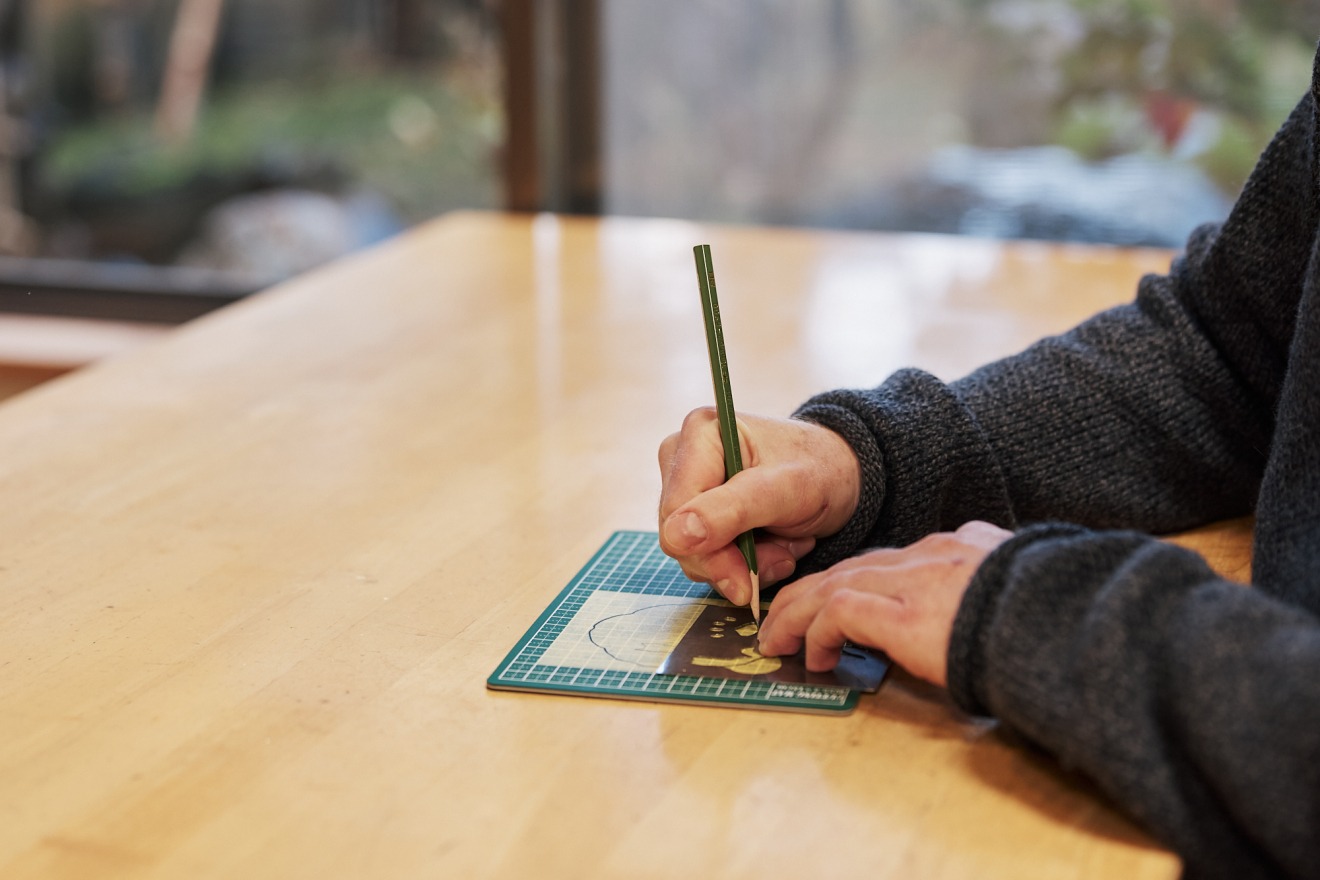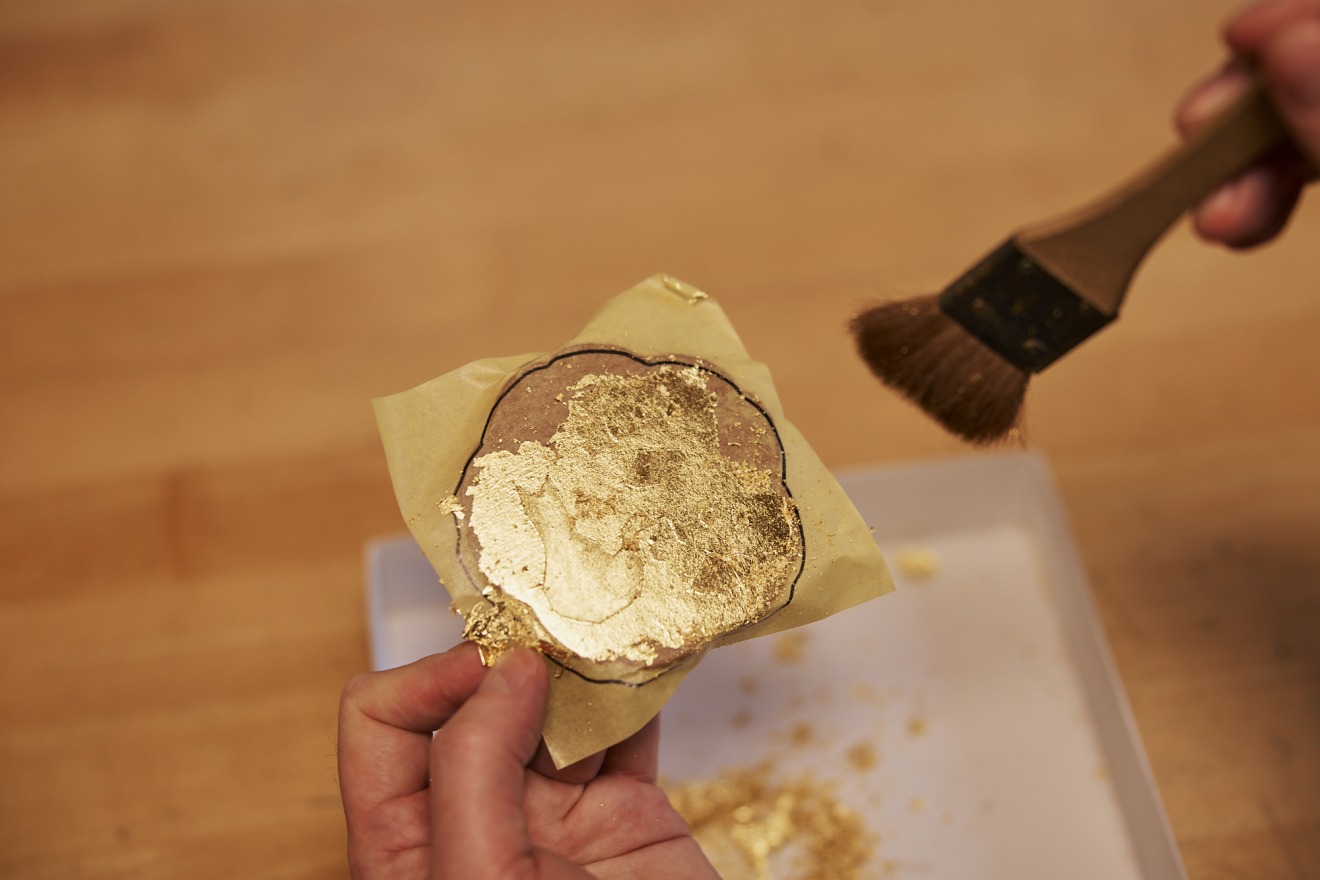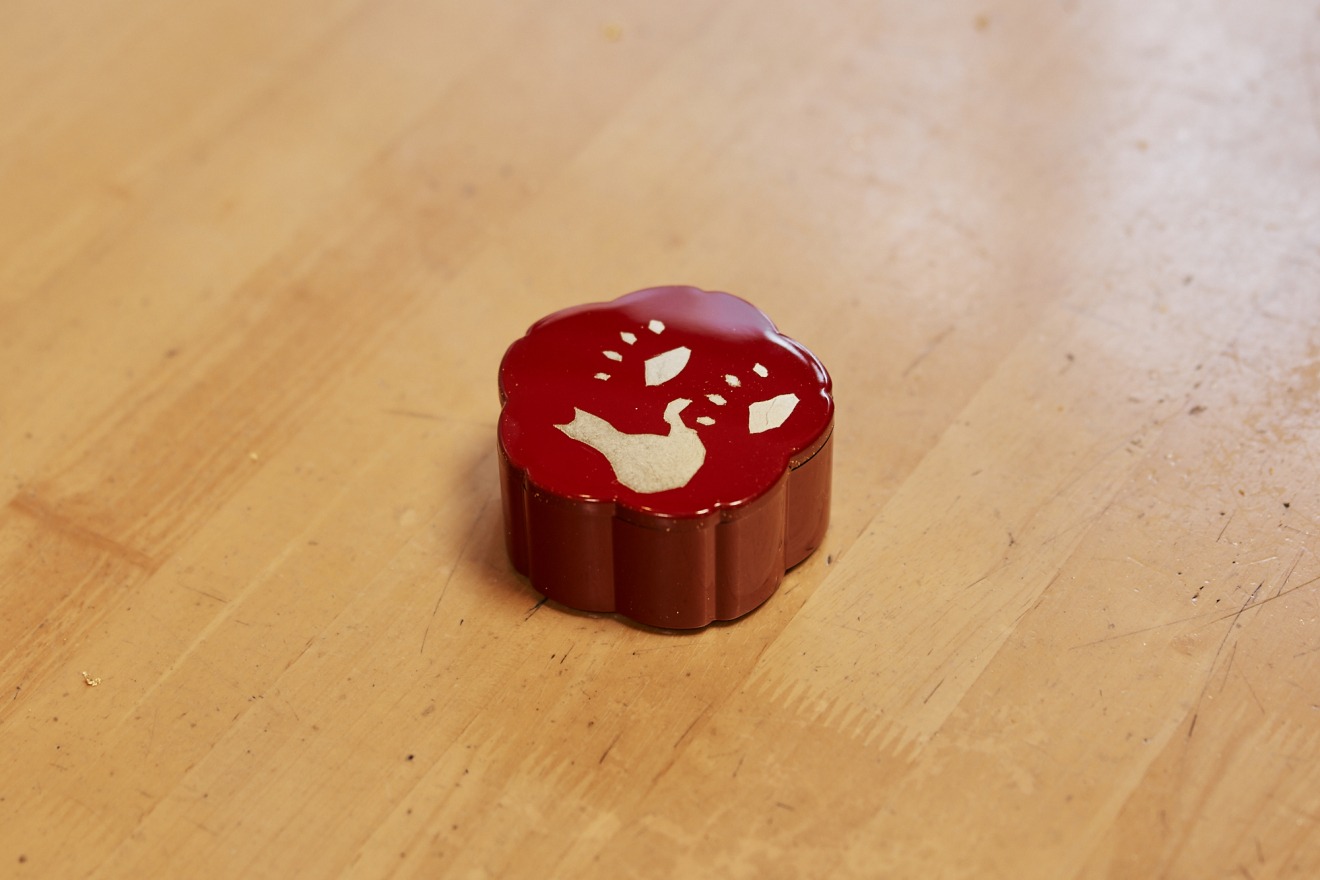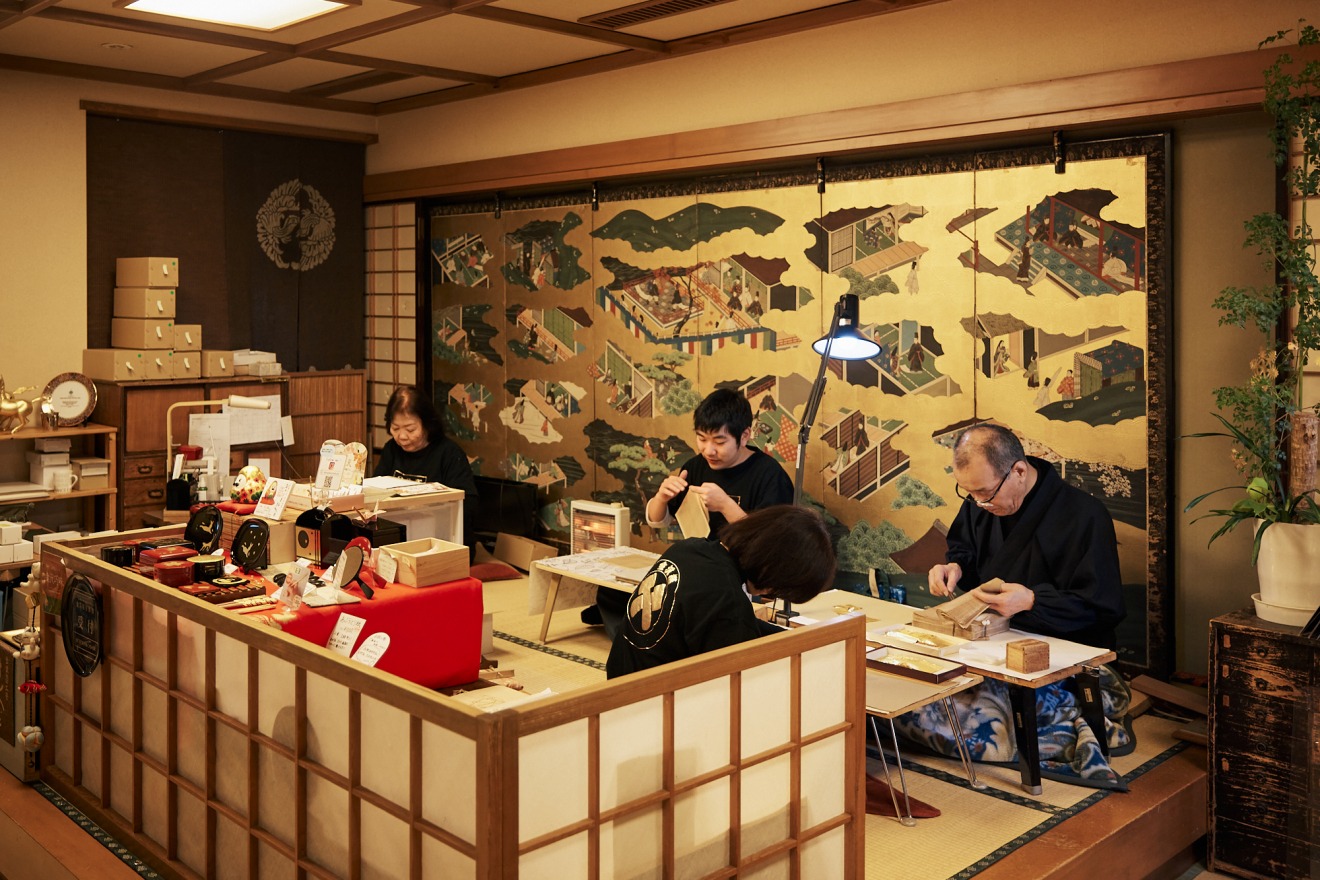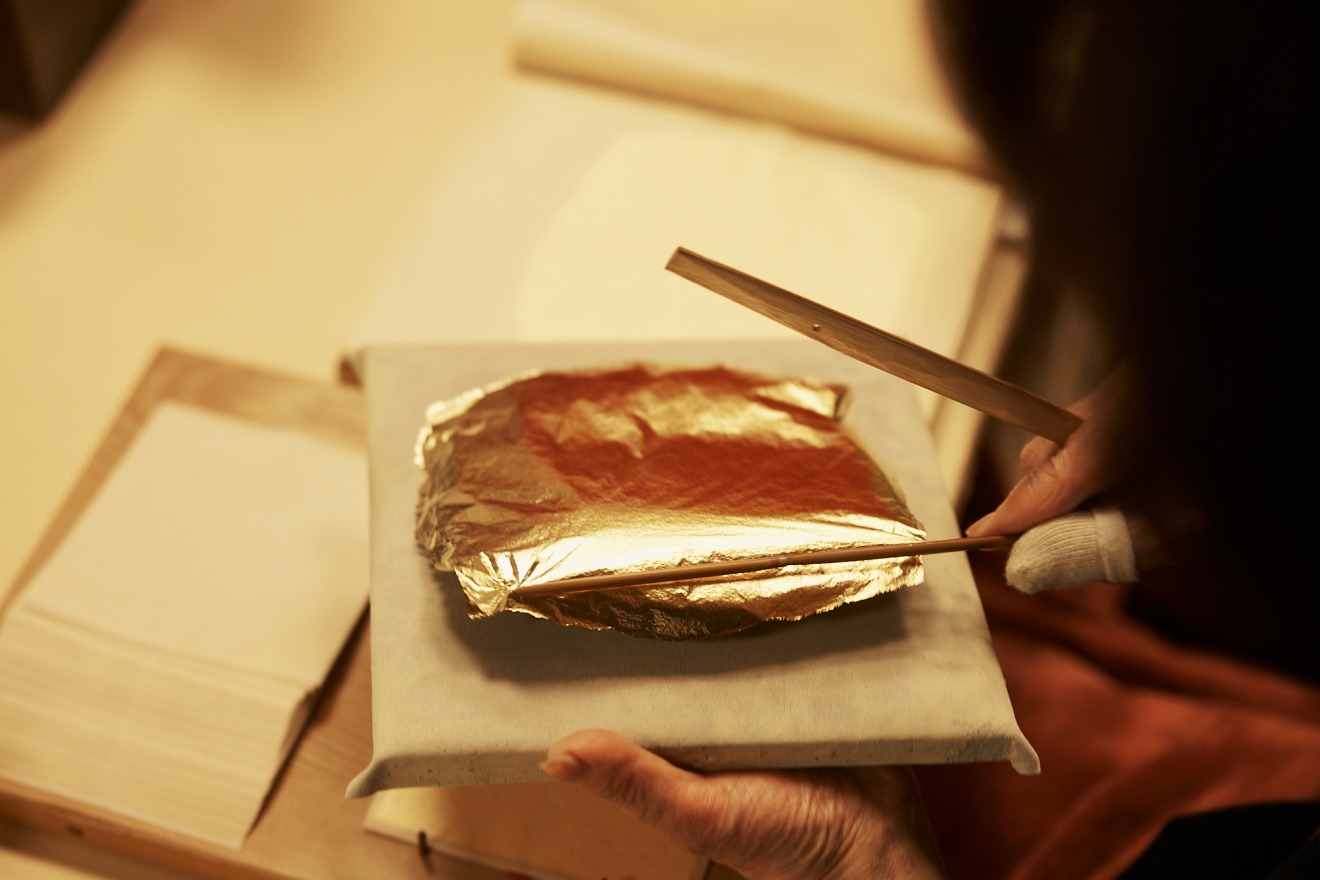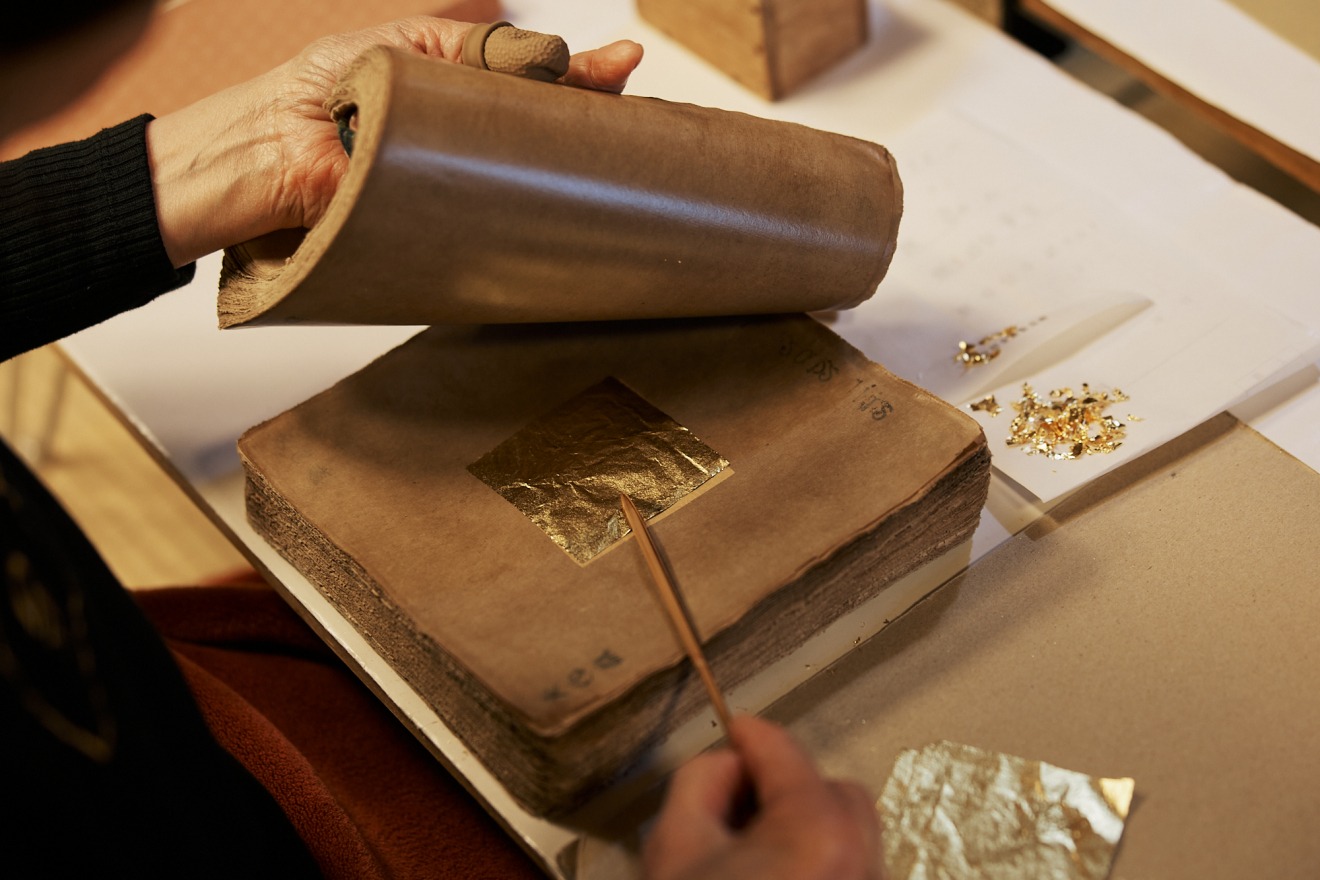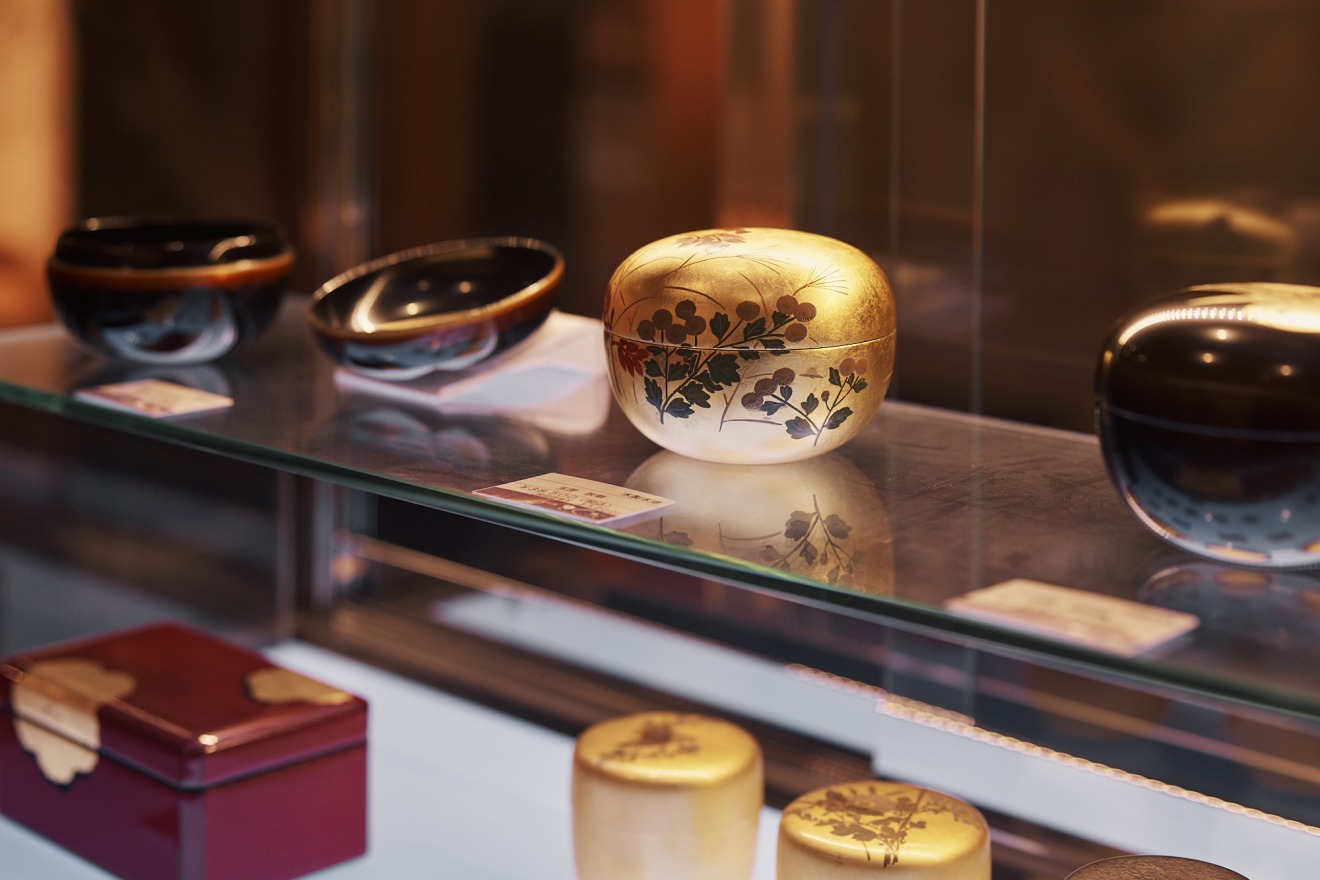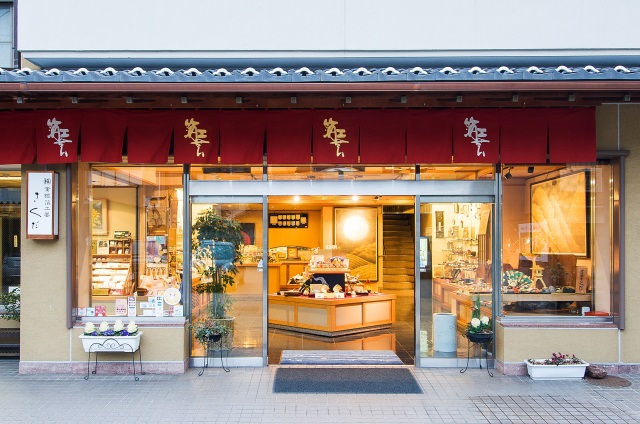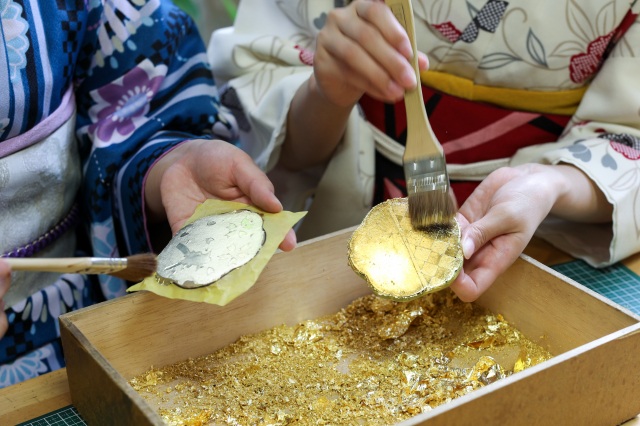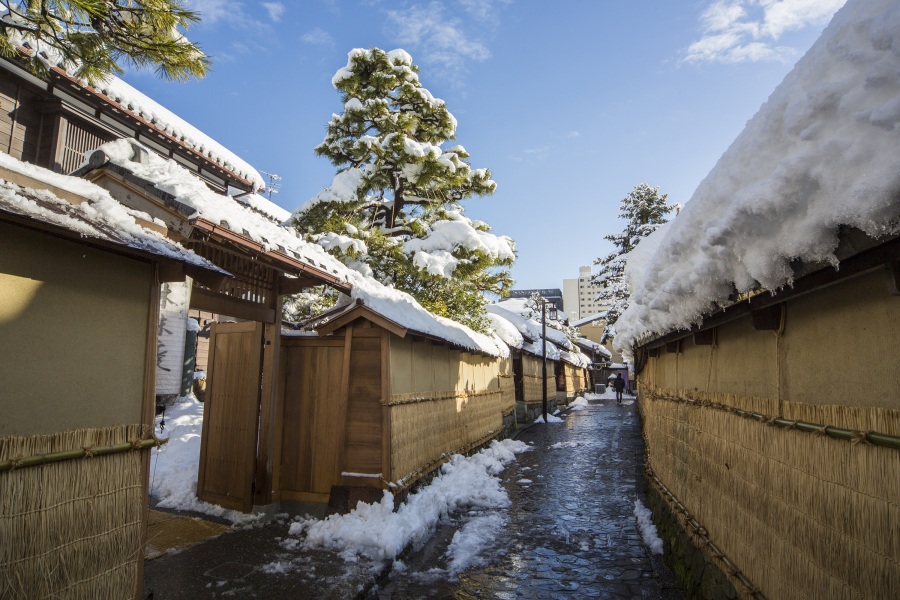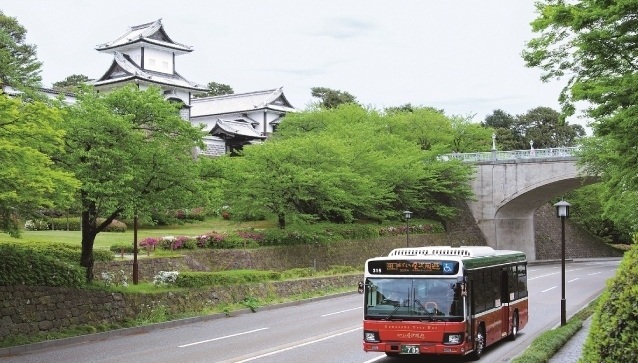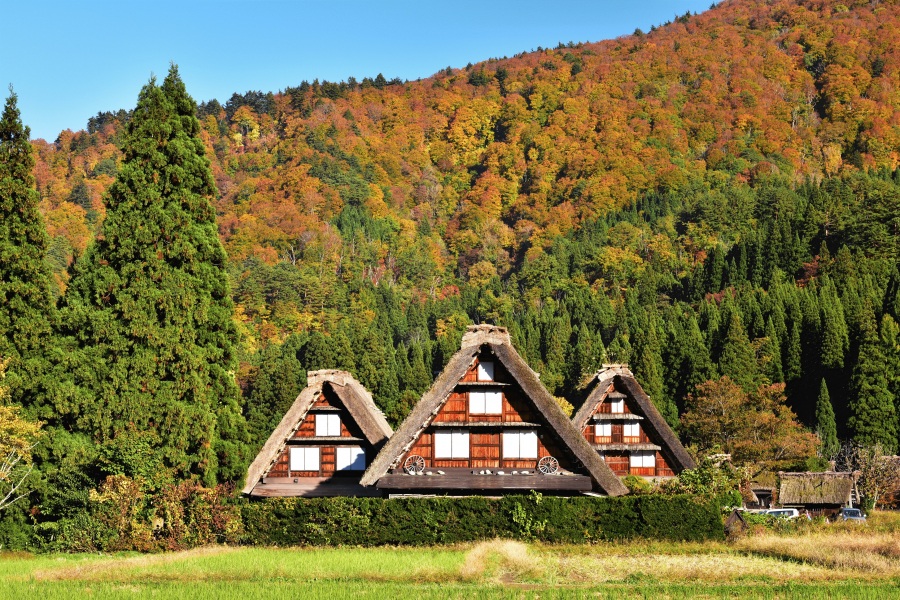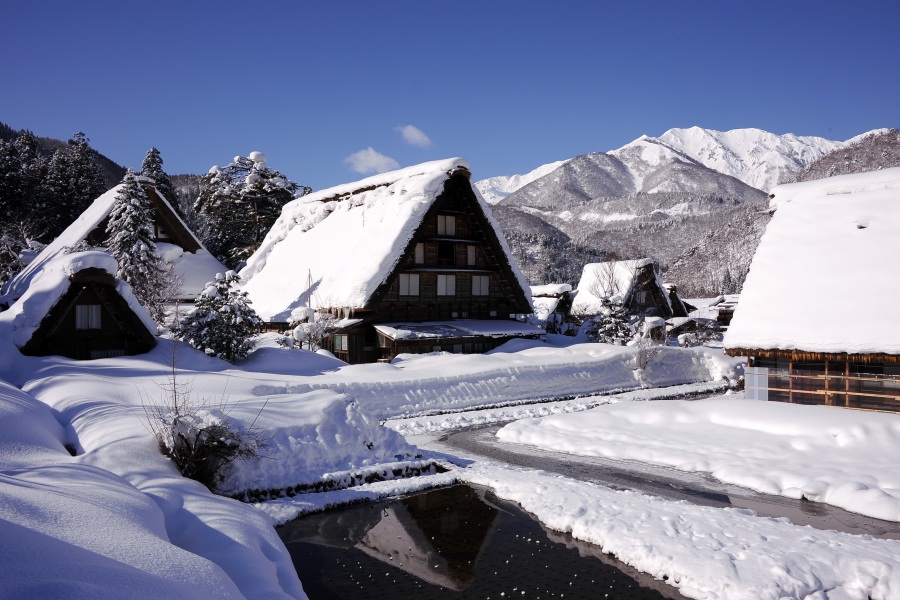KANAZAWA GOLD LEAF: A TRADITION UNIQUE TO KANAZAWA
The name “Kanazawa” is comprised of two kanji, 金and 沢, which together mean “marsh of gold,” and derives from a story many centuries ago of a potato farmer who discovered gold dust in his field. Nowadays, Kanazawa produces over 100% of all gold leaf in Japan, and thus is nearly synonymous with this important product, which the Japanese call kinpaku and UNESCO recognizes as an Intangible Cultural Heritage.
One can see Kanazawa gold leaf in stunning display at Kyoto’s famous Kinkakuji Temple, as well in several structures at Nikko in Tochigi prefecture, and in the ornamental ridge-end tiles at Todaiji Temple in Nara – all national treasures. Luckily for visitors to Kanazawa, there are many opportunities to learn how gold leaf is made and used, and they can even produce their own kinpaku keepsake to bring home with them.
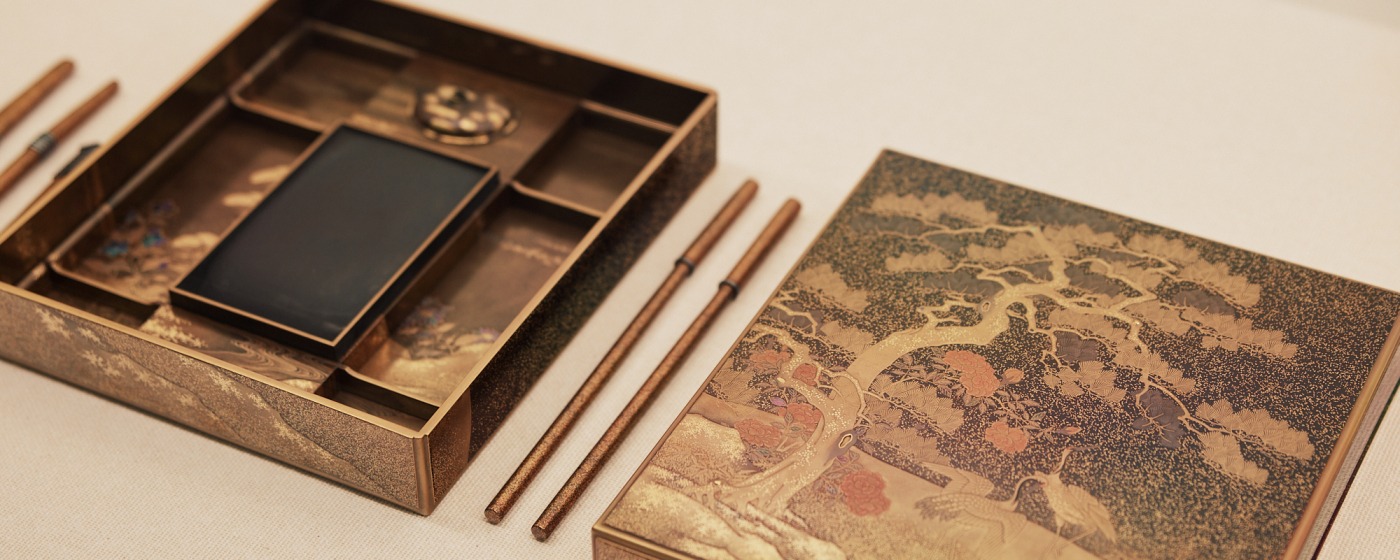
KANAZAWA YASUE GOLD LEAF MUSEUM
An obvious place to experience kinpaku is at the Kanazawa Yasue Gold Leaf Museum, one of the only gold leaf museums in the world, located a short walk from the popular Higashi-chaya tourist district. The founder of the museum, Takaaki Yasue, who had it constructed in 1974, donated it to the city of Kanazawa in 1985.
In 2010 it was moved to its present location, which has been at the center of Kanazawa’s gold-leaf production since the beginning of the 19th century. Today, one can still find various businesses here related to gold leaf.
A three-story structure built in the style of an old Kanazawa storehouse, the museum’s main attractions are featured on the second floor, accessible either by elevator or a staircase (on whose steps there appear to be wet cat pawprints and rain pooling from an umbrella – in gold leaf, of course).
The second floor’s self-guided tour starts with a video on a screen made with – what else? – gold leaf.
(This may make it the most precious video screen in the world!)
From here, a long glass exhibition case explains the process of making gold leaf. First gold alloy melted with a small amount of silver and copper is rolled and beaten to thin foil with a thickness of 1/1,000th of a millimeter. The display continues, demonstrating how hammering paper is prepared with gampi fiber, persimmon juice, and egg. The gold leaf is sandwiched between this hammering paper and beaten again to attain its 1/10,000th of a millimeter thickness, then trimmed, finally, using a bamboo frame.
From here visitors proceed to the museum’s Miniature Gold Leaf Laboratory and an art installation featuring 100 sheets of gold leaf arranged in an illuminated column, so thin they appear transparent.
The museum’s Permanent Exhibition Gallery begins at this point. Visitors will stop in their tracks at the sight of a magnificent Buddhist family altar, crafted in Kanazawa in the 1960s, with exquisite gold leaf on black lacquer – hinting at a truly stunning collection of artwork and craftsmanship that awaits visitors just around the corner.
While exhibition pieces change throughout the year, they often feature a variety of gold-leaf decorative techniques used on such items as embroidered thread, incense boxes, Kutani-ware ceramics, standing screens, hanging scrolls, wooden dolls, lacquerware objects, mizuhiki decorative cords, cypress hand-fans, inkstone writing boxes, warming braziers, jewelry boxes, and even Japanese backgammon sets. Maki-e (gold or silver powder sprinkled on lacquer and then polished), chinkin (gold-leaf powder in etched grooves), and kirikane (baked layers of gold leaf cut into decorative shapes) are some of the best-known decorative techniques on display, and the objects here represent some of the finest craftsmanship not only in Kanazawa but in all of Japan.
- Kanazawa Yasue Gold-Leaf Museum
-
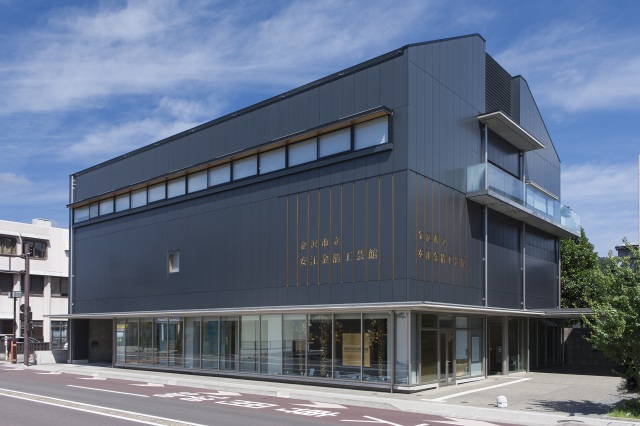
- more
SAKUDA GOLD & SILVER LEAF COMPANY
A memorable complement to the Kanazawa Yasue Gold Leaf Museum is a trip to nearby Gold Leaf Sakuda.
This famous company is located in the city’s Higashi-chaya district, where visitors (with reservations) can spend an hour with a professional gold leaf artisan learning how to apply gold leaf to an object that they can later take home and fondly remember Kanazawa by. Or, if you’re like me and live in Kanazawa, you can take your gold leaf object home and celebrate being a resident in such a culturally rich city!
As soon as I entered Gold Leaf Sakuda, I was led to a back room and invited to sit at a table with a pleasant view of the company’s well-kept garden. My instructor followed me in and, after a warm welcome, asked me what I’d like to apply gold leaf to from a selection of eight different objects. Torn between a round plate and a small cherry blossom box, I opted for the latter, then was faced with choosing a decorative design for its surface.
Since my wife and I are cat people, I pointed to a metal square in which a cat shape and paw prints had been cut out.
My instructor nodded his understanding and quickly left the room.
Next, I was told to cut around the edges of the tracings until I could peel away their shapes. Once I had completed that step, and happy I hadn’t cut off my fingers, I aligned the outline of my box-top with the actual box top, then affixed the masking tape to it as wrinkle-free as possible. On my third try, satisfied that I’d done this properly, it was time to brush glue over the cut-out holes I’d made in the tape, through which my red box-top now gleamed.
After a liberal application of glue (made from cashew nuts, but don’t eat it!), I was handed a square of gold leaf and instructed to place it upon my box-top, then to press down on it until the gold leaf adhered. After giving careful attention to this, I slowly peeled back the gold leaf, which had filled in my cut-out cat designs. I proceeded to brush gold flakes back and forth over the designs until a shiny layer stood out in them, then peeled the tape from the box-top, leaving behind the layer of gold I’d just applied. Voila! On the beautiful red of my box-top were a gold cat
and two gold paw prints, just as I’d intended. The cat looked as relieved at my success as I did.
After receiving rounds of congratulations from everyone in the room, I was led next into the workspace of real gold leaf artisans (only about 60 of whom are left in Kanazawa, compared to more than 1000 a century ago), Here, gold is beaten to 2- to 3/1000ths of a millimeter, sandwiched between 1800 sheets of gampi paper specially prepared for foil stamping, and beaten again to 1/10,000th of a millimeter over a period of about three days. Afterward, the gold leaf is cut to a specified size and inserted between 100 sheets of washi paper to complete the gold leaf-making process.(I was also told that a single grain of rice, if subjected to such a beating technique, would spread out over 1200 square centimeters.) It was fascinating to watch. However, beginning to panic that I might sneeze and ruin their morning’s work, I decided I was ready to leave.
Before I did, I was given a quick tour of the gift shop, which sells an amazing range of gold leaf products at very reasonable prices, and also of the gallery on the second floor, where you can see (and buy!) gold leaf screens and decorative objects. And don’t be shy to peek inside the bathrooms here. It may be the only chance you ever have to see bathrooms covered in gold and platinum leaf!
It was fascinating to learn about and use entsuke gold leaf, which Gold Leaf Sakuda produces for companies all over Japan and around the world. Once you know where to find gold leaf in Japan – it’s nearly everywhere in Kanazawa when you know where to look for it (sometimes even on ice cream, in sake, and in some cosmetics) – you’ll now know where it comes from, how it’s made, and why it’s such an important and unique part of Kanazawa’s history and culture.
Text by Novelist David Joiner
Photo by Nik van der Giesen
